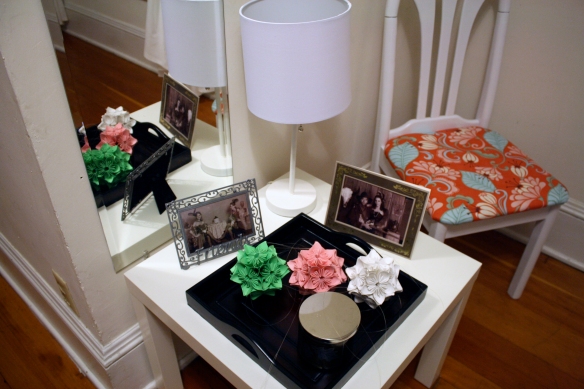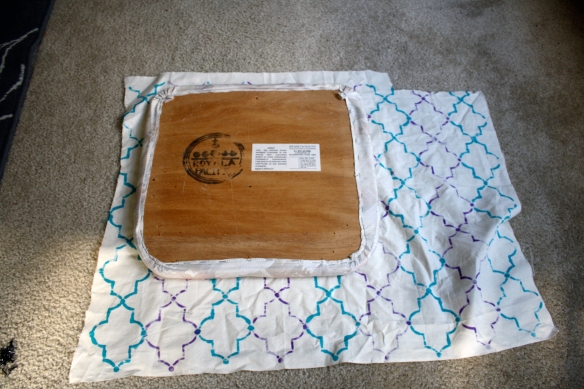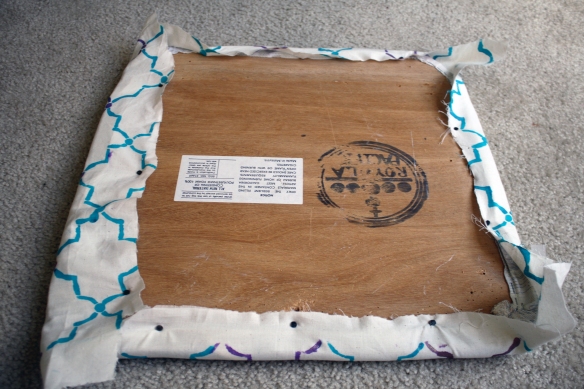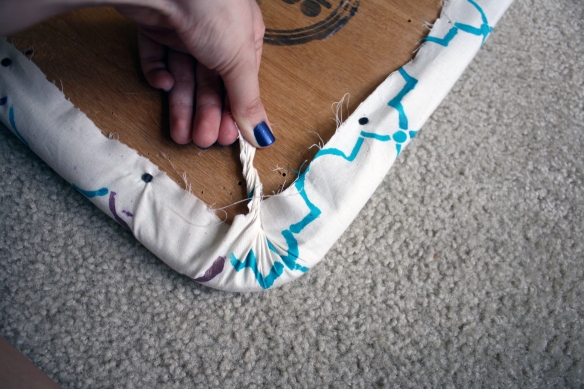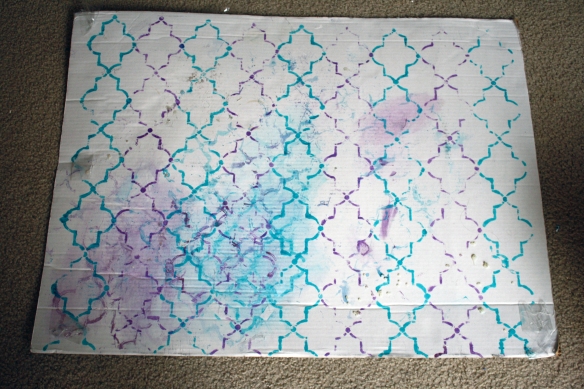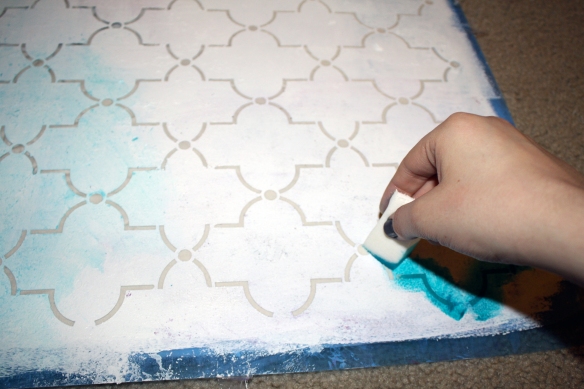Remember that fabric I hand-painted last week? (More on that here.) Well I put it to use and I’m pretty happy with the result.
It all starts with this chair.
It didn’t look too pretty here, when I first bought this chair from Goodwill a year ago for $2. It was scratched up and had horrible fabric.
I gave it a once over with sandpaper and hit it with a can of white spray paint. Then I took the upholstery off and covered it with fabric I was using for my room. It looked so much better.
It looked great in my old bedroom where it matched my decor.
But after a year of being used every day as a computer chair, and then being moved to a room where it no longer matched, it was time for another DIY reupholster makeover.
So I removed the seat. I then removed the reupholstery nails I had used before, with a flat head screwdriver.
This is what lies beneath the fabric. It’s not a pretty sight.
So once again I put my fabric down to recover it. Lay the fabric with the right side facing the floor and place the seat face down on the wrong side.
I then used the same upholstery nails and holes as before to secure the first side. (I purchased the upholstery nails at True Value in the U-District. I don’t remember how much I spent on them but you can find them for really cheap on Amazon.)
Once the first side is done, it’s time to move on to the opposite side. The most important thing to remember is to keep things pulled really tight every time you put a nail in. This ensures there will be no wrinkles or loose fabric when you’re done. Make sure you cut off any excess fabric at this point. Once you secure all of the sides it should look like this.
Then it’s time to secure the corners. This may not be the most professional way, but the way I’ve had the most success is to twist the corners together, pull tight, and then nail in place.
After that I put an upholstery nail on either side of the twist where the fabric was poofed up away from the wood. When you’re done, the back should look something like this.
From start to finish this took me under an hour.
As you can see, everything looks tight and in place, even though the underside doesn’t look perfect, that’s ok as long as the fabric looks tight and secure.
I’d like to get a throw pillow to add to the chair for some added comfort. I’d also like to eventually get a side table to add to this side of the room. But overall, I’m really happy with my new and improved chair that didn’t cost me a penny. Who doesn’t love a good before and after?
Have you done any DIY upholstering lately? Have you ever re-done a DIY project? Let me know in the comment section.




